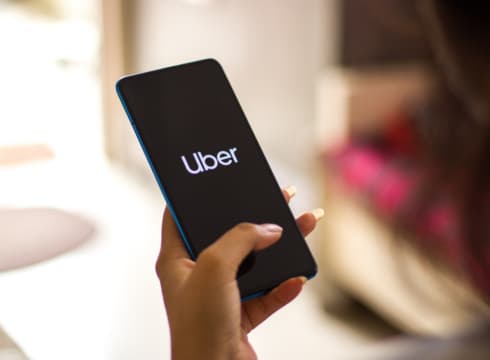Uber top executive Nitish Bhushan said that it is not financially viable for the company to operate in the city under the HC mandate
As an interim measure, the Karnataka High Court has capped the convenience fee at 10% of the total auto fare
Calling current pricing and commission constraints as curtailments to the ecosystem, Uber said it is willing to work with the government on appropriate fare regulations
Inc42 Daily Brief
Stay Ahead With Daily News & Analysis on India’s Tech & Startup Economy
Amid court-enforced cap on convenience fee charged by ride-hailing apps, Uber on Tuesday (November 1) said that the 10% cap could force it to limit auto services to select parts of Bengaluru.
In a blogpost, Uber India and South Asia’s head of central operations Nitish Bhushan said that the threshold was not financially viable for the company to operate in the city.
“Currently, our commission in Bengaluru is capped at 10% of the fare collected. This is not financially sustainable. If our costs can not be covered through commissions, we will have to find ways to offload costs that could impact the experience of drivers and riders. In the face of these commission caps, we may have to make the difficult decision to limit Uber Auto to select parts of Bengaluru where the service is viable,” said Bhushan.
Calling current pricing and commission constraints as curtailments to the ecosystem, Bhushan said that the ride-hailing giant was willing to work with the government on appropriate fare regulations.
The top Uber executive also noted that the current fixed metered fares were not adequately compensating its drivers for doorstep pickups. He further added that non-adequate compensation for drivers could lead to poor consumer experience and take the city ‘back to pre-ridesharing times’.
On the point of non-adequate compensation of its auto drivers for additional pickup time and extra distance travelled, Uber said that over a period of time:
- Lower availability of autos for e-hailing would make the service less dependable
- The service could see higher cancellations by drivers, especially on short trips
- Users could also witness offline solicitation of extra cash and haggling
Uber claimed that the data was already pointing to these projections, noting that cancellations in the city had surged by more than 50% in Bengaluru since scrapping of the doorstep compensation.
According to Uber, more than 10 Lakh Bengaluru residents use Uber Auto service every month. The company claims to have more than 50,000 auto drivers who operate on the platform.
At the centre of the debate is the 10% cap imposed by the Karnataka High Court on the convenience fee charged by apps like Uber, Ola, and Rapido from users. It is pertinent to note that the convenience fee is a fixed amount paid by users and goes directly into the accounts of the aggregators.
The Ongoing Tussle
As reports emerged of aggregators charging high convenience fees from users, the Karnataka transport department banned Uber and Ola from offering auto rides. The authorities also said that the cab aggregators were not allowed to offer auto services.
In response, the aggregators moved the Karnataka High Court and challenged the order. Subsequently, the court issued an interim direction which capped the convenience fee at 10% of the total fare.
Later, top government officials held a meeting with executives of ride-hailing apps, but it ended in an impasse. While transport department officials remained adamant on 10% cap demand, cab aggregators sought 25% convenience fee including GST.
As the logjam continued, the government purportedly stepped in. Reports emerged that the government was mulling approaching the HC with a bid to ratify the interim 10% commission cap on auto rides.
It appears to have spooked Uber which has now claimed that the move could render its business financially unviable.
While Uber made the entire blogpost about drivers, the platform has not had a great track record when it comes to the treatment of its drivers. After its mega VC money-fueled debut in India in 2013, it reportedly slashed the salaries of its drivers by a third in 2017. In 2020, government guidelines further allowed these ride-hailing companies to eat into the margins of their drivers.
As if this was not enough, Uber does not directly pay for maintenance of cars listed on its problems, leaving many drivers to fend for themselves as margins narrow in light of rising fuel hike and inflation.
The ride hailing space in India continues to be highly contested and is largely a duopoly of Uber and Ola. The Indian online taxi services market continues to be a lucrative proposition and is projected to soar to INR 6,159 Cr by 2024.
{{#name}}{{name}}{{/name}}{{^name}}-{{/name}}
{{#description}}{{description}}...{{/description}}{{^description}}-{{/description}}
Note: We at Inc42 take our ethics very seriously. More information about it can be found here.


